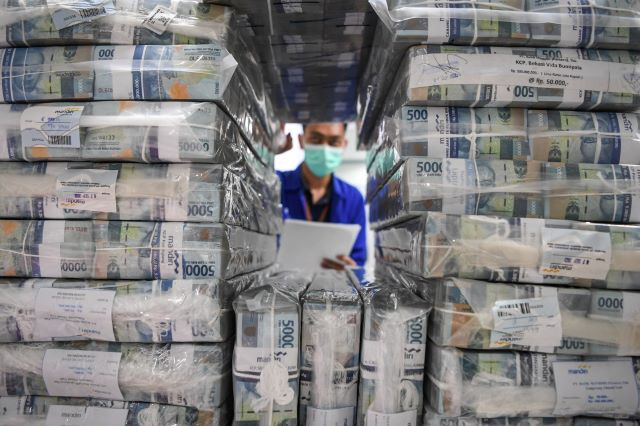Popular Reads
Top Results
Can't find what you're looking for?
View all search resultsPopular Reads
Top Results
Can't find what you're looking for?
View all search resultsWhy it’s different now: Rupiah to stand firm amid global volatility
Unlike previous episodes of market volatility, the Indonesian rupiah is well poised to remain resilient, with only moderate depreciation.
Change text size
Gift Premium Articles
to Anyone
G
lobal markets are entering another episode of market volatility. United States bond yields have reached new highs (4.75 percent for US 10-year bonds) since the 2008 global financial crisis, due to an increasing probability of a still hawkish Federal Reserve as a result of the US job market’s still robust growth, coupled with rising oil and food prices.
On the other hand, the market sees a rising probability of a global recession in addition to worsening geopolitical squabbles in Europe and the Middle East.
The combination of higher US yields and rising market fears have led to capital outflows from emerging markets, including Indonesia, triggered by worsening implied yields and bond yield spreads. In the past month to Oct. 5, capital outflows have reached approximately US$1.6 billion.
A torrent of capital outflows, accompanied by smaller trade surpluses, has caused a depreciation of the rupiah. The Indonesian currency lost 1.4 percent on a month-to-month basis (mtm) in September 2023, worse than other emerging Asian currencies such as the ringgit (minus 1.66 percent mtm), renminbi (minus 0.64 percent month-on-month) and the Philippine peso (minus 0.33 percent mtm).
Many fear that the ongoing depreciation will accelerate and follow the previous patterns of excessive volatility, such as in 2018 (the rupiah depreciated 6.05 percent) and in early 2020 (the rupiah depreciated 14.9 percent).
While some depreciation is likely in the short term, especially with worsening Chinese economic growth and an impending US recession, we believe that the rupiah is likely to be resilient and its depreciation will be moderate against the greenback for several key reasons.
First, there are indications that the domestic foreign exchange (forex) supply has significantly improved in the past two years. CEIC data show total forex transactions in the domestic financial market until December 2022 amounted to $138 billion (plus 9.38 percent year-on-year/yoy), supported by a rapidly growing forex time deposit overnight placement ($242 billion, plus 51.89 percent yoy) due to higher commodity prices.



















